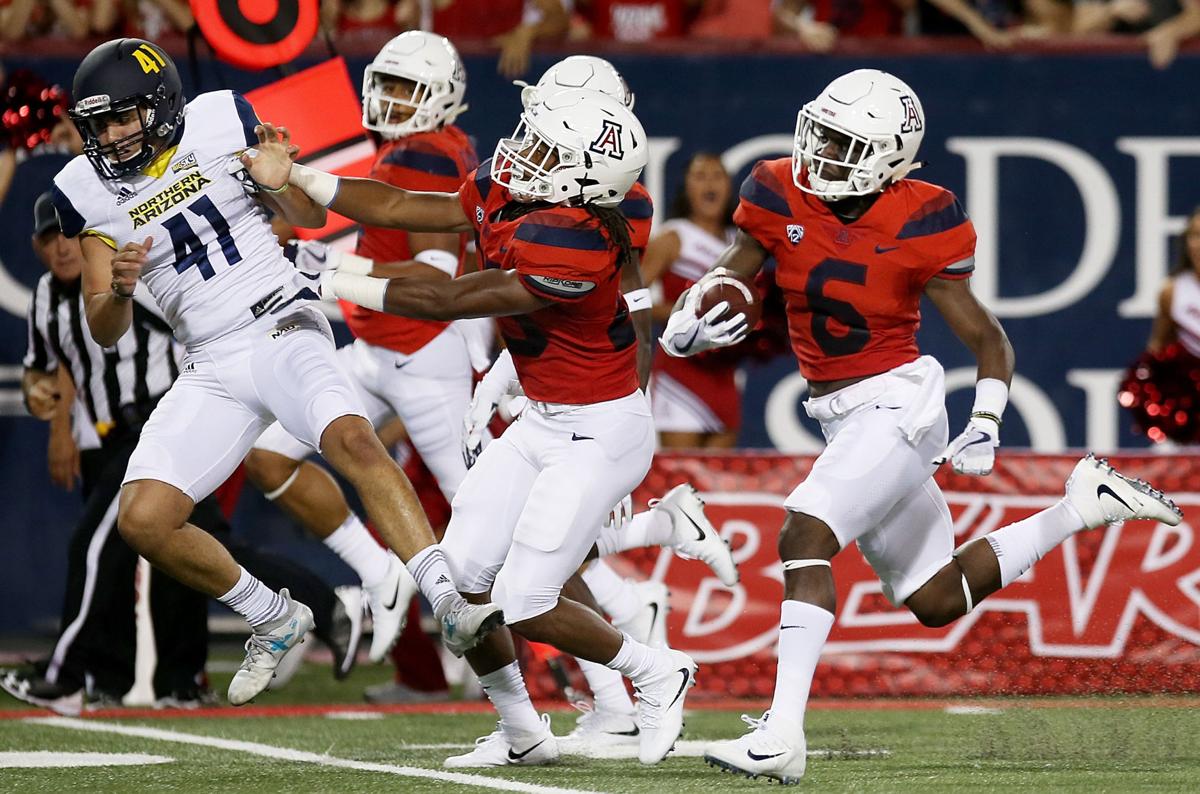Arizona Wildcats spring football is almost here. Kevin Sumlin’s first full practice as UA coach is set to begin at 5:40 p.m. Monday.
We’ve been previewing spring ball, position by position, since last week. The series concludes with a look at special teams. Links to every previous entry can be found at the bottom of this post.
SPECIAL TEAMS
Who’s here: K Lucas Havrisik (6-2, 173, SO), K Josh Pollack (5-10, 184, RS SR), RS Shun Brown (5-10, 177, SR), LS Nick Reinhardt (6-1, 240, RS JR)
Who’s coming: P Dylan Klumph (6-3, 230, RS SR)
The big question: Will new additions help transform Arizona’s special teams from a liability to a strength?
First, let’s clear up a misconception: The Wildcats’ special teams were not bad last year. Their punting – one component of special teams – was not up to par, and it was costly.
Heading into 2018, Arizona appears to have fixed that problem. Klumph, who had a fine run at Cal, is coming to Tucson as a grad transfer. Reinhardt should be back after missing most of last season because of a knee injury. And with the addition of a 10th assistant coach, the Wildcats now have a full-time special-teams coordinator in Jeremy Springer.
He’ll have some pieces to work with. Klumph averaged 43.9 yards per punt at Cal while playing at least half his games at about sea level. Tucson’s elevation is almost 2,500 feet. Klumph should be able to flip field position – something Arizona hasn’t executed consistently since the Drew Riggleman era.
We’re also operating under the assumption that Klumph can cleanly field a snap and get the ball off. Operational break downs killed the Wildcats in November losses at USC and ASU.
Pollack was part of one of those. It’s not an excuse, but he probably shouldn’t have been in that position. Unless the player is a truly exceptional talent, one guy shouldn’t be punting and placekicking in Division I football.
Barring something unforeseen, that won’t be the case in 2018. What role Pollack will have is unclear. He has proved to be a reliable placekicker over the past two seasons, making 20 of 29 field-goal attempts and 101 of 103 PATs.
But Pollack ceded kickoff duties last season to the powerful Havrisik, who also attempted four field goals. He made three of them – all from 40-plus yards (including a 57-yarder).
Havrisik was a major asset as the kickoff specialist, booting 63 of 93 for touchbacks. He displayed NFL leg strength as a 173-pound freshman whom ex-coach Rich Rodriguez jokingly referred to as “the little, skinny kicker.”
Brown had two punt returns for touchdowns last season – and should have had three. (You know of what I speak, Wildcat fans.) Besides his standout return skills, Brown benefited from improved blocking. That was largely a product of upgraded talent via the deep 2017 signing class.
Springer doesn’t have a ton of experience. He’s only 29 years old, played as recently as 2011 and spent the past three seasons as a quality-control coach under Sumlin.
But Sumlin obviously saw enough in Springer to entrust him with the special-teams units. He then went out and got a punter. He’s off to a good start.
ARIZONA SPRING PREVIEW SERIES





